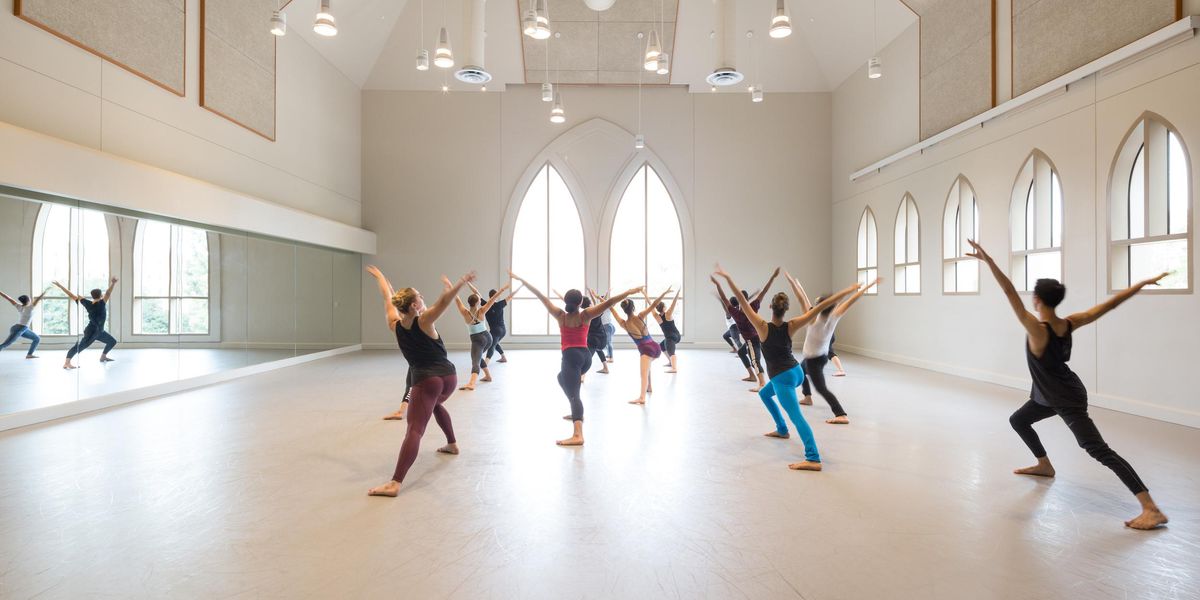Working Out with Frances Chung
With Gennadi Nedvigin in Liam Scarlett’s “Hummingbird.” Photo by Erik Tomasson, Courtesy SFB.
Frances Chung is a petite powerhouse. Exceptionally strong, the 5′ 4″ San Francisco Ballet principal has the technical chops to perform a sparkling Kitri and the endurance to lead the African-classical fusion of Val Caniparoli’s Lambarena. She first learned to boost her strength with swimming back when she was a corps member rehabbing a bad ankle sprain that happened during a rehearsal of Jerome Robbins’ Dances at a Gathering.
“I was out for six weeks,” she recalls. “I had to learn how to work out by not dancing.” Frequently recommended by orthopedists, swimming loosens and strengthens nearly every muscle in a dancer’s body without weight load or joint-taxing impact, so it’s ideal for recovery and aerobic conditioning. “Doing a full ballet without stopping is what makes dance really difficult for me,” she says. “Swimming helps me with stamina, so I can do the whole ballet better.”
Chung, now 31, still uses swimming to heal injuries and maintain the fitness required by SFB’s varied repertoire. She adapts her weekly 30- to 45-minute swim to her always-changing needs. “If I feel fatigued, going to the pool is still beneficial. Just jumping into cold water is very therapeutic for my body, which is usually pretty swollen.” With two full-length ballets—and a reprise of Dances at a Gathering—on this season’s slate, she’ll rely on swimming to help keep her body at its best. “Ultimately, it comes down to taking class every day. But swimming is an extra push that allows me to dance more freely.”
Get Your Kicks
Chung tailors her pool routine to how her body feels and what she is dancing—lap swimming boosts her cardio strength, while kickboarding strengthens specific muscles.
1.
Warm-up. Chung loosens up with 5 minutes of low-key breaststroke and freestyle laps, then does 5 to 10 minutes at a faster pace to raise her heart rate. “If I feel like I’ve been lagging in rehearsal, I’ll push and do more sprinting.”
2.
Kickboard basics. Fifteen minutes of kickboarding works Chung’s legs and core without building upper-body bulk. Hold the top of the board with your hands and rest your elbows on the center. For the first lap or two, kick with your lower body under the water. “I relax my knees and legs, and keep a relatively straight back. I don’t want to sink into my neck or my lower back, so I try to really pull up.” Then work the glutes and hip flexors by keeping your hips at water level and splashing while you kick. Knees can be bent or straight.
3.
Kick it up. To challenge your obliques and central core muscles, move your hands to the sides of the kickboard, push the board under the water and extend your arms fully. Stabilize the board with your core as you kick with splashes for 2 to 3 additional laps. “There is a lot of resistance, even though the water is holding you up,” says Chung.
4.
Go for a jog. Aqua-jogging gives Chung a high-intensity cardio workout that’s easy on the joints. Starting at one side of the pool at neck depth, move your arms and legs in a running motion without touching the bottom as you work your way back and forth across the pool.
Tip:
Ankles tend to sickle during freestyle kicking, so focus on maintaining a straight or winged position to reinforce correct muscle
memory.





